Ford Puma vs Land Rover Defender – Which one offers the better deal?
Both models have their strengths – but which one suits you more?
Compare performance, efficiency, price and space directly: Ford Puma or Land Rover Defender?
Costs and Efficiency:
When it comes to price and running costs, the biggest differences usually appear. This is often where you see which car fits your budget better in the long run.
Ford Puma has a significantly advantage in terms of price – it starts at 24800 £, while the Land Rover Defender costs 57900 £. That’s a price difference of around 33086 £.
Fuel consumption also shows a difference: Ford Puma manages with 5.40 L and is therefore to a small extent more efficient than the Land Rover Defender with 6 L. The difference is about 0.60 L per 100 km.
As for range, the Ford Puma performs clearly better – achieving up to 376 km, about 328 km more than the Land Rover Defender.
Engine and Performance:
Under the bonnet, it becomes clear which model is tuned for sportiness and which one takes the lead when you hit the accelerator.
When it comes to engine power, the Land Rover Defender has a decisively edge – offering 635 HP compared to 168 HP. That’s roughly 467 HP more horsepower.
In acceleration from 0 to 100 km/h, the Land Rover Defender is significantly quicker – completing the sprint in 4 s, while the Ford Puma takes 7.40 s. That’s about 3.40 s faster.
In terms of top speed, the Land Rover Defender performs slightly better – reaching 250 km/h, while the Ford Puma tops out at 210 km/h. The difference is around 40 km/h.
There’s also a difference in torque: Land Rover Defender pulls decisively stronger with 750 Nm compared to 290 Nm. That’s about 460 Nm difference.
Space and Everyday Use:
Cabin size, boot volume and payload all play a role in everyday practicality. Here, comfort and flexibility make the difference.
Seats: Land Rover Defender offers distinct more seating capacity – 8 vs 5.
In curb weight, Ford Puma is convincingly lighter – 1316 kg compared to 2300 kg. The difference is around 984 kg.
In terms of boot space, the Land Rover Defender offers noticeable more room – 786 L compared to 523 L. That’s a difference of about 263 L.
In maximum load capacity, the Land Rover Defender performs distinct better – up to 2078 L, which is about 795 L more than the Ford Puma.
When it comes to payload, Land Rover Defender decisively takes the win – 819 kg compared to 469 kg. That’s a difference of about 350 kg.
Who comes out on top?
Overall, the Land Rover Defender shows itself to be outperforms in nearly all aspects and secures the title of DriveDuel Champion.
It convinces with the more balanced overall package and proves to be the more versatile choice for everyday use.

Land Rover Defender
Ford Puma
The Ford Puma presents itself as a stylish compact SUV with a distinctive design that combines practicality with a dynamic driving experience. Its sleek lines and sporty aesthetics make it stand out on the road, while the interior offers a comfortable and tech-savvy environment. With an emphasis on efficiency and a smooth drive, the Ford Puma is well-suited for both urban commutes and countryside adventures.
details @ puma.fordpresskits.com
@ puma.fordpresskits.com
 @ puma.fordpresskits.com
@ puma.fordpresskits.com
 @ puma.fordpresskits.com
@ puma.fordpresskits.com
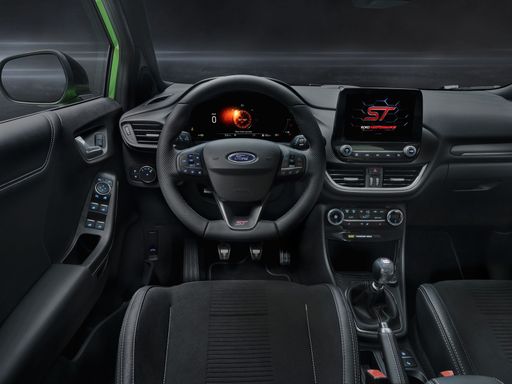 @ puma.fordpresskits.com
@ puma.fordpresskits.com
Land Rover Defender
The Land Rover Defender boasts a rugged design that seamlessly blends traditional aesthetics with modern innovation, making it a true icon in the world of off-road vehicles. Its performance capabilities are matched by a luxurious interior, offering comfort and cutting-edge technology for drivers and passengers alike. Whether tackling rough terrains or cruising through city streets, the Defender exudes versatility and reliability, maintaining its reputation as a robust yet refined companion for any adventure.
details @ media.landrover.com
@ media.landrover.com
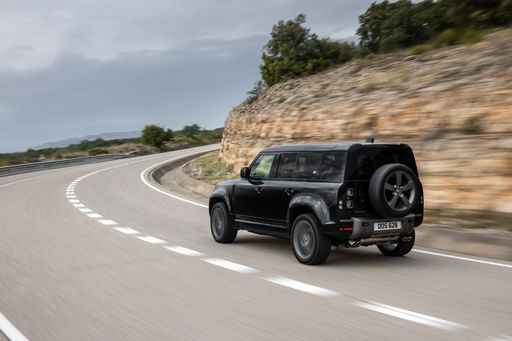 @ media.landrover.com
@ media.landrover.com
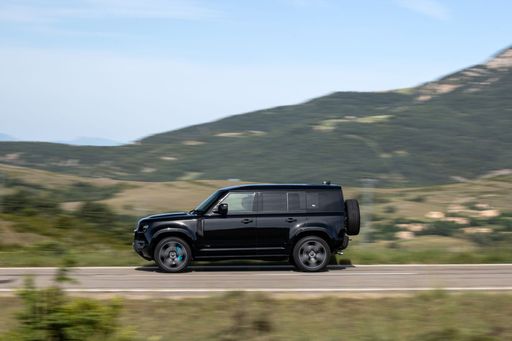 @ media.landrover.com
@ media.landrover.com
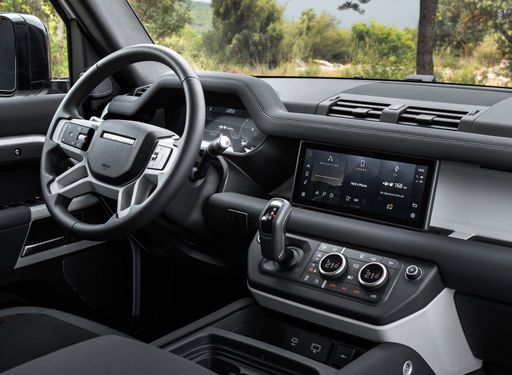 @ media.landrover.com
@ media.landrover.com
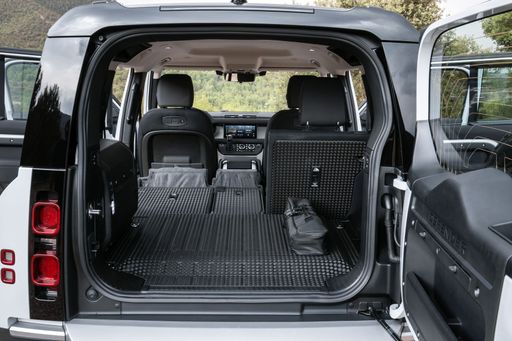 @ media.landrover.com
@ media.landrover.com
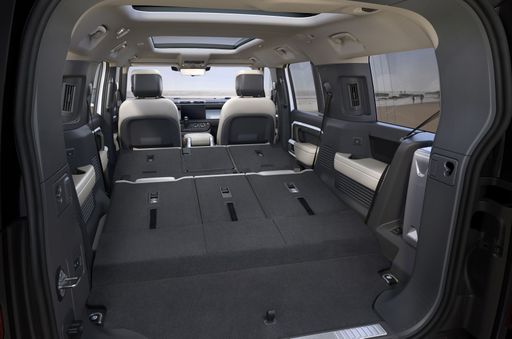 @ media.landrover.com
@ media.landrover.com

|

|
|
|
|
Costs and Consumption |
|
|---|---|
|
Price
24800 - 36300 £
|
Price
57900 - 172000 £
|
|
Consumption L/100km
5.4 - 5.9 L
|
Consumption L/100km
6 - 14.4 L
|
|
Consumption kWh/100km
13.1 - 13.9 kWh
|
Consumption kWh/100km
-
|
|
Electric Range
361 - 376 km
|
Electric Range
48 km
|
|
Battery Capacity
43 kWh
|
Battery Capacity
15.40 kWh
|
|
co2
0 - 135 g/km
|
co2
135 - 324 g/km
|
|
Fuel tank capacity
42 L
|
Fuel tank capacity
89 - 91 L
|
Dimensions and Body |
|
|---|---|
|
Body Type
SUV
|
Body Type
Off-Roader
|
|
Seats
5
|
Seats
2 - 8
|
|
Doors
5
|
Doors
3 - 5
|
|
Curb weight
1316 - 1563 kg
|
Curb weight
2300 - 2745 kg
|
|
Trunk capacity
456 - 523 L
|
Trunk capacity
293 - 786 L
|
|
Length
4186 - 4226 mm
|
Length
4323 - 5358 mm
|
|
Width
1805 mm
|
Width
2008 mm
|
|
Height
1550 - 1555 mm
|
Height
1967 - 1995 mm
|
|
Max trunk capacity
1216 - 1283 L
|
Max trunk capacity
1263 - 2078 L
|
|
Payload
367 - 469 kg
|
Payload
494 - 819 kg
|
Engine and Performance |
|
|---|---|
|
Engine Type
Electric, Petrol MHEV
|
Engine Type
Petrol, Diesel MHEV, Plugin Hybrid, Petrol MHEV
|
|
Transmission
Automatic, Manuel
|
Transmission
Automatic
|
|
Transmission Detail
Reduction Gearbox, Manual Gearbox, Dual-Clutch Automatic
|
Transmission Detail
Automatic Gearbox
|
|
Drive Type
Front-Wheel Drive
|
Drive Type
All-Wheel Drive
|
|
Power HP
125 - 168 HP
|
Power HP
200 - 635 HP
|
|
Acceleration 0-100km/h
7.4 - 9.8 s
|
Acceleration 0-100km/h
4 - 10.2 s
|
|
Max Speed
160 - 210 km/h
|
Max Speed
175 - 250 km/h
|
|
Torque
170 - 290 Nm
|
Torque
500 - 750 Nm
|
|
Number of Cylinders
3
|
Number of Cylinders
4 - 8
|
|
Power kW
92 - 124 kW
|
Power kW
147 - 467 kW
|
|
Engine capacity
999 cm3
|
Engine capacity
1997 - 5000 cm3
|
General |
|
|---|---|
|
Model Year
2025
|
Model Year
2025
|
|
CO2 Efficiency Class
A, D
|
CO2 Efficiency Class
G, D
|
|
Brand
Ford
|
Brand
Land Rover
|
Is the Ford Puma offered with different drivetrains?
The Ford Puma is offered with Front-Wheel Drive.
The prices and data displayed are estimates based on German list prices and may vary by country. This information is not legally binding.
